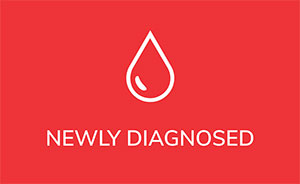
Recently, several questions have been submitted to CLL Society from patients who were not aware that CLL / SLL also carries a higher risk of developing secondary cancers, particularly skin cancer. So, let’s take a moment to discuss this topic.
Using Surveillance, Epidemiology, and End Results (SEER) data from 38,754 patients who were diagnosed with CLL between 1973 and 2015, researchers found that patients with CLL in the United States had a 20% higher risk of developing a new cancer when compared to the general population. One of the areas for which the risk was most elevated when compared to the general population was for developing skin cancer. There are a few different types of skin cancer. Of the three major types (basal cell carcinoma, melanoma, and squamous cell carcinoma) melanoma is the rarest but also the most aggressive.
Most individuals with CLL / SLL understand that the compromised immune system is the reason that an increased infection risk comes along with having the disease. But not as many are aware that secondary cancers, such as skin cancer, is also caused by an immune system that is no longer functioning at its best.
One of the normal functions of the immune system is the body’s ability to identify and destroy cancerous cells before they ever become detectable. A compromised immune system does not function in that capacity quite as well. So those with CLL / SLL need to remain even more vigilant than those without CLL / SLL when it comes to screening, preventing, and self-monitoring for secondary cancers.
Skin Cancer Screenings
Skin cancers are particularly common in CLL / SLL. Skin cancer screening should be done at least annually, and more frequently if you have a family history of skin cancer or a suspicious area that needs closer monitoring.
It is important to note that while these annual screenings can be done by your primary care provider, you might also consider adding a dermatologist to your healthcare team. Dermatologists typically have more advanced equipment available and are extremely skilled in detecting suspicious spots and lesions on the skin that can be difficult to see with the naked eye. A general dermatologist will do a great job of performing skin exams annually to make sure no skin cancers are developing. But it is never a bad idea to ask if your dermatologist is familiar with CLL / SLL and the associated increased risks of secondary skin cancers. There is also a subspecialist of dermatology called Oncodermatology. This is a dermatologist that has a special interest in caring for patients who have different types of cancer.
Skin Cancer Prevention
While skin cancer screening is extremely important, skin cancer prevention is critical. One of Benjamin Franklin’s most famous quotes is, “An ounce of prevention is worth a pound of cure.” While he was not referring to cancer screenings, there is a lot of wisdom that can be applied to the subject of skin cancer prevention.
Here are some important things to keep in mind when it comes to sun exposure and skin cancer prevention:
- Always use sunscreen if you are outside during the day. Make sunscreen application part of your regular skincare routine.
- It is recommended to reapply sunscreen after two hours, swimming, or excessive sweating.
- Sunscreens should minimally be SPF 30, and preferably SPF 50.
- Use a sunscreen that is broad-spectrum, meaning it has both UVA and UVB protection.
- Sunscreen should also have a mineral ingredient (such as zinc or titanium) as one of the active components.
- Wear a wide-brimmed hat, long-sleeved clothes, and long pants when spending time outside as an added layer of protection.
- Remember that you are still getting sun exposure when it is cloudy and even when you are in the shade.
Regular Self-Monitoring
In addition to protecting yourself from the sun and scheduling skin cancer screenings, it is also important to make it a habit to check your own skin often for abnormal-looking moles or spots from head to toe.
A great tool to keep in mind when developing a process for performing your own regular skin assessments is something called “The ABCDE’s of Dermatology.” Any new moles, changes to an existing mole, or any other changes in your skin can be a symptom of skin cancer and should be brought to the attention of your dermatologist immediately.
A: Stands for asymmetrical. Does the mole or spot have an irregular shape?
B: Stands for border. Is the border of the mole or spot irregular or jagged?
C: Stands for color. Is the color of the mole or spot uneven?
D: Stands for diameter. Is the mole or spot larger than the size of a pea?
E: Stands for evolving. Has the mole or spot changed during the past few weeks or months?
While CLL / SLL can usually be well managed with targeted therapies over the course of the disease, some secondary cancers are not always quite as manageable. Especially if they progress to metastatic disease. This is why all screenings for secondary cancers become so incredibly important. Please have a detailed conversation with your CLL / SLL provider about all the annual testing and screenings that are necessary and remain diligent about keeping track of when your next exam is due.
Early detection is the key to better outcomes when it comes to skin cancer. So please schedule those dermatology screenings, limit sun exposure, use sunscreen as directed, and make regular self-skin examinations part of your routine.
Keep learning and stay well.
Robyn Brumble, MSN, RN
Director of Scientific Affairs & Research
CLL Society

















